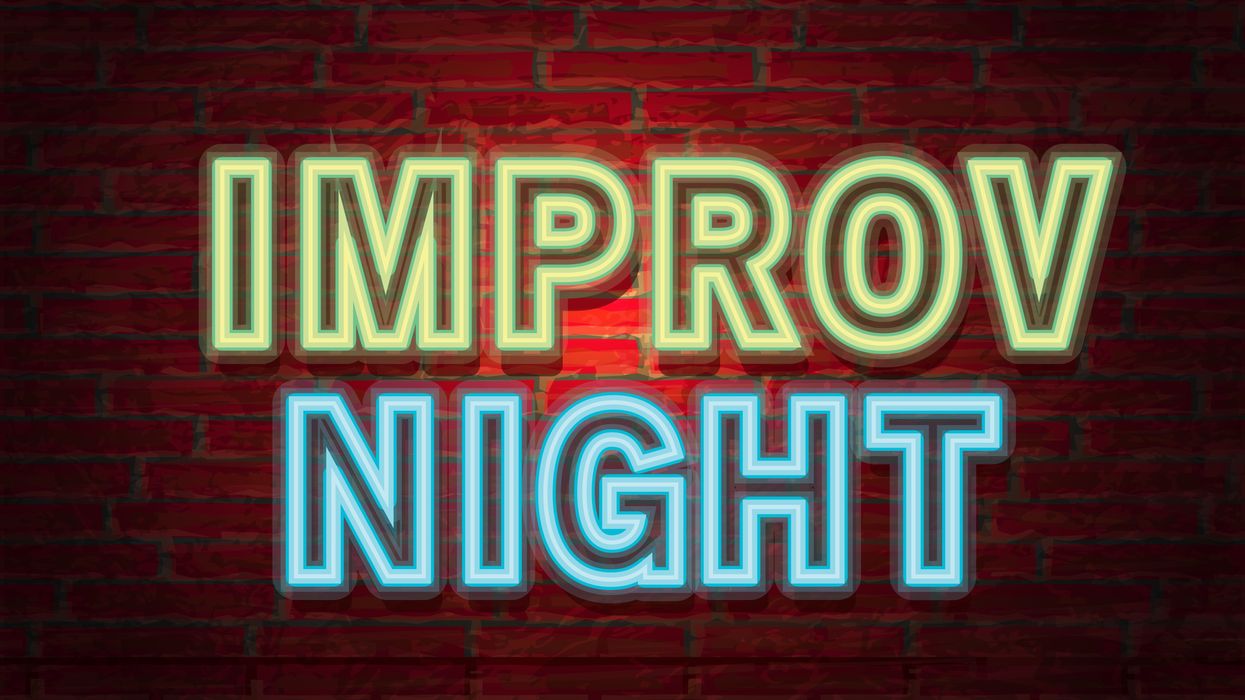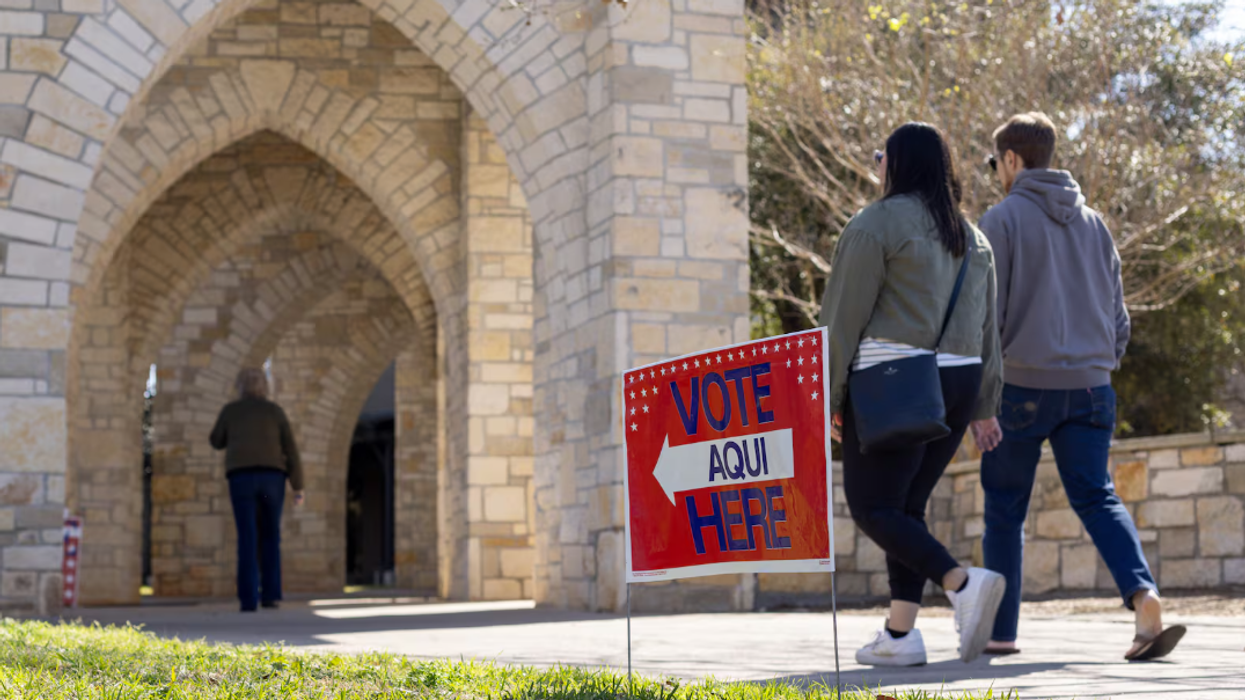Waisanen is a professor of strategic and leadership communication at the Marxe School of Public and International Affairs at Baruch College. He is the author of “ Improv for Democracy ” and Leadership Standpoints.” Novick has been a political comedian, camp counselor, editorial director, attorney, busboy, radio show host, professional speaker, child actor, and an elected official in New Jersey —but not necessarily in that order.
On a September day with crisp fall air and a cloudless sky, I (Joey, one of the authors) launched my first political campaign. Running for borough council member in Flemington, N.J., I decided to get out into the community and canvas door-to-door to stir up support for my cause. I walked up to an old Victorian house and knocked on the door. An elderly woman in a colorful house dress and comfortable slippers opened it. I introduced myself and prepared to launch into my scripted pitch.
“Oh, you’re running for council,” she said. “Well, tell me this, what are you going to do about our roads? And what’s your position: Would you fix them by raising taxes or issuing bonds?” Not knowing anything about the issue, I could have fumbled my way through a response. But observing the passion and knowledge this voter had in the moment, I decided to lean in and say, “Actually, I could bore you with a stock, vague answer, but I am out here today to listen to what you think about the issue. What do you think we should do?”
What followed was a master class and nuanced analysis from the voter on both sides of the issue. I nodded with each point, acknowledged her concerns and tried to build on points throughout the conversation. She ended with an appreciative “thank you!” The approach I took to say “yes, and …” in the moment and practice “leadership by listening” would never have been possible without having taken improv classes.
It’s an approach that I never lost sight of in winning five times and going on to serve for some 15 years as a borough council member.
In the fast-paced world of politics, communication skills can make or break a campaign. An ability to connect with voters, convey a compelling narrative, lead and adapt well to change, and inspire action are all crucial for success.
As the author of “Improv for Democracy ” and a former elected official in the story above, we think our political environment is missing something fundamental to both running for office and governing well: an improvisational mindset. Improvisational exercises and techniques can improve just about every communication and leadership skill, enabling candidates and politicians to connect with their audiences on a deeper level and ethically and effectively convey their messages.
Like skilled actors on unscripted televisions shows such as “ Whose Line Is It Anyway ” or “ Curb Your Enthusiasm,” developing an improvisational mindset involves holding one’s conclusions tentatively, standing ready to listen to and work with different viewpoints, seeking to say “yes, and …” and both building on and uniting with others as a starting point for public discourse. Critique and judgment are always available later, but an improvisational mindset always engages and works with what’s at hand first.
The term “improv” can bring up many different associations, so it’s important to clarify exactly what we mean here. In the political world, we see two extremes that continue to make for poor campaigning and governing: being overly scripted and robotic, or being completely unscripted and winging it. An adaptive, improvisational mindset walks a line between both approaches.
In a telling analysis of Hillary Clinton’s presidential campaign, Jonathan Allen and Amie Parnes note how “the candidate who eschewed unscripted interactions with voters gave speeches that failed to connect her to a cause larger than herself.” In a post-campaign reflection on the Graham Norton show, Clinton shared as much herself, saying how in a presidential campaign redo she would not have withheld her genuine stories or capacities to observe, connect and establish greater presence with voters.
Yes, there were many more factors involved in that election, but at least one basic lesson shouldn’t be missed: Every candidate and public figure needs to work on practicing adaptiveness and mindfulness, in a “ state of active, open attention to the present,” sensing or responding to what’s actually happening in the moment with constituents.
One of the founding mothers of modern improvisational theater, Viola Spolin, said that improvising well is an “openness to contact with the environment and each other and [a] willingness to play. It is acting upon environment and allowing others to act upon present reality.” Can you imagine if every politician made that their mantra?
On the other hand, a completely opposite approach to campaigning and governance is also rife throughout our political environment. Whatever one thinks of former President Donald Trump, it’s widely agreed that his main mode is completely off-the-cuff (to the point of often making stuff up). And it’s not just Trump — plenty of other public figures have engaged in this style.
While it might seem that winging it is “improvisational,” this approach is actually disconnected from the broader environment and humanity, channeling self-focused and often pre-ordained conclusions. That kind of improvising does not do well because it’s closed to what’s outside oneself, rather than responding to “offers” all around — like the contribution the woman Joey met made to his overall learning and political run. Unmoored spontaneity lacks an outward focus that approaches people and issues with an ability to learn something new, pivot from mistakes, or deal with the developing nuances of different situations.
For political candidates and elected officials, an improvisational mindset prioritizes three specific skills.
The first is adaptive authenticity. Here, public figures learn to think on their feet, trust their instincts, embrace uncertainty and vulnerability, and respond creatively to the needs and interests of people in the moment, connecting with voters on a genuine and relatable level. This all starts with a commitment to truly dialoguing with rather than monologuing at audiences, building trust and rapport. Some call this “dynamic” rather than “static” authenticity. Moreover, candidates and officials can learn to respond to tough questions and engage in debates with poise and credibility, and to make a memorable, lasting impression.
The second is nonverbal connection. Improvisational training focuses on the elements of timing, tone, body language, voice modulation and similar nonverbal dimensions in communication that is vital to connecting with audiences. The ability to raise and lower one’s status alone involves nonverbal skills that are trainable, allowing one to bridge with diverse voter groups across different contexts.
Finally, there’s open storytelling. Effective storytelling in political campaigns requires concise and impactful messaging, but also the refinement of messages by listening to and experimenting with the concerns of different narratives. Closed, single stories that brook no dissent are dangerous in politics — so testing messaging and refining it based on broad, diverse audience feedback makes storytelling an open-ended project that an improvisational mindset is well suited to addressing.
If every candidate or elected official took an improv class, we’d see an immediate and measurable difference in the quality of our public discourse, the state of politics and the type of meaningful leadership all of us should expect from our leaders.
If politics is about serving all of one’s constituents well, it’s time for every candidate and public figure to make improvisational training a core part of their readiness for office.


















